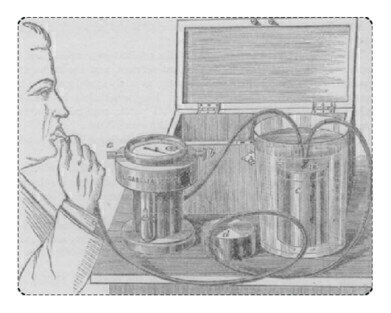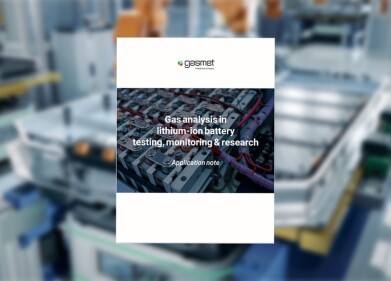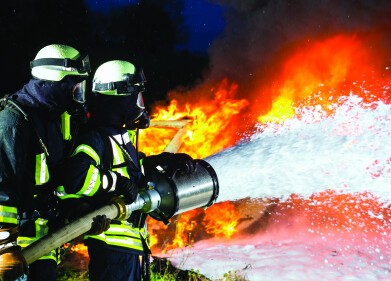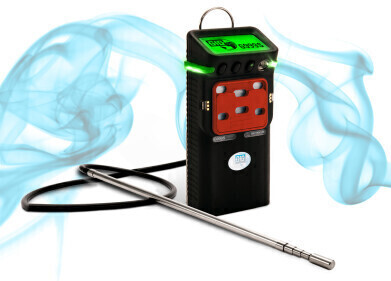Health & Safety
Evolution in instrumentation what will the future bring?
Feb 24 2022
Author: Tim Turney
Casella has over 220 year’s experience delivering monitoring solutions, including supplying eminent figure Charles Darwin with precision instruments for his research. As we celebrate Darwin’s birthday anniversary this February, Casella’s Global Marketing Manager, Tim Turney, shares how instrumentation has evolved, and the developments we can expect in the future.
What is Casella’s history in precision instrumentation?
Casella was founded in 1799 and some thirty years later, Casella supplied Charles Darwin with instruments for use in his research, which later delivered ground-breaking insights into the diversity of life and the origins of earth.
Casella’s exhibited at the first Great Exhibition at Crystal Palace in 1851, designed to showcase cutting-edge science and technology,between May and October that year, the exhibition brought together six million visitors, a figure equivalent to a third of the population of Britain at that time.1 In the 20th century, Casella supported the British military in two world wars, using its expertise to supply compasses, optics, and photogrammetry equipment. Since this period, Casella invented a series of ‘world firsts’ including the first personal air sampling pump, microprocessor-based sound level meter with CMOS memory, and a hand-held, battery-powered real-time noise analysing device.
Today, Casella uses its long-standing expertise to deliver innovative technology solutions that empower people, companies, and communities to protect their health, with key specialisms in noise, vibration, boundary, and air sampling monitoring.
How has instrumentation developed over the years?
Early instruments were handmade from brass and relatively expensive compared to today. Instruments were also manually operated, meaning the user had to write things down and create papers charts such as a barograph. Today, users can take advantage of technology that enables easier, safer, and faster data collection, and remote monitoring capabilities. For example, Casella’s Airwave app allows users to remotely start, pause or stop a measurement run, monitor battery life and memory capacity and check measurement progress direct from a mobile device. Data can be emailed alongside photos and site details, adding context to the sampling and further simplifying the reporting process. Eliminating manual reporting not only reduces effort but provides additional traceability and removes the possibility of writing data down incorrectly.
What industry developments were key milestones?
Scientific advancements and a growing understanding of the long-term effects of workplace hazards on health have driven industry innovation. For example, prolonged exposure to excessive noise levels can cause life-changing damage because the harm to the sensory cells and other structures within the ears is irreversible, resulting in permanent noise-induced hearing loss. However, it was not until 1989 that managing noise exposure in the workplace evolved from guidance to law in the UK. This regulatory change meant that the development of noise monitoring instrumentation was essential to protect worker health and ensure business compliance.
Asbestos is another prime example of regulatory change driving developments in instrumentation. Once hailed a ‘wonder material’, asbestos was used in homes and industrial properties throughout the 19th century because of its low cost, chemical resistance, fireproofing and insulating properties. Today, it is recognised as a carcinogen and hazardous substance, driving a need for innovations in sampling to protect anyone who disturbs this dangerous material.
In terms of technology, the prevalence of mobile electronics has given access to better microprocessors and driven battery-powered technology, which allowed devices to be made smaller and with more capabilities, a trend that will continue.
How do you expect the future of instrumentation to evolve?
New sensor technology such as Micro Electro-Mechanical Systems (MEMS) are allowing new, lower-cost and smaller products to be developed. User expectations are also continuing to shift as mobile, cloud and data-driven technologies develop and become an integral part of modern-day monitoring processes. Looking to the future, innovative nanotechnology and nanoparticles may result in the need for new measurement technologies and methodologies that once again transform the instrumentation landscape.
As the industry continues to evolve, Casella will remain dedicated to keeping pace and at the forefront of innovation to ensure more people and communities protect their health.
Tim Turney, Global Marketing Manager at Casella
Tim Turney is Global Marketing Manager at Casella and graduated as an engineer from Queen Mary and Westfield in London. Since starting at Casella in 1998, Tim has been involved in the acoustics and air sampling industry, specializing in measurement and instrumentation technologies.
Digital Edition
IET 34.2 March 2024
April 2024
Gas Detection - Biogas batch fermentation system for laboratory use with automatic gas analysis in real time Water/Wastewater - Upcycling sensors for sustainable nature management - Prist...
View all digital editions
Events
Apr 22 2024 Hannover, Germany
Apr 22 2024 Marrakech, Morroco
Apr 23 2024 Kuala Lumpur, Malaysia
Apr 23 2024 Kintex, South Korea
Apr 23 2024 Edmonton, AB, Canada


















